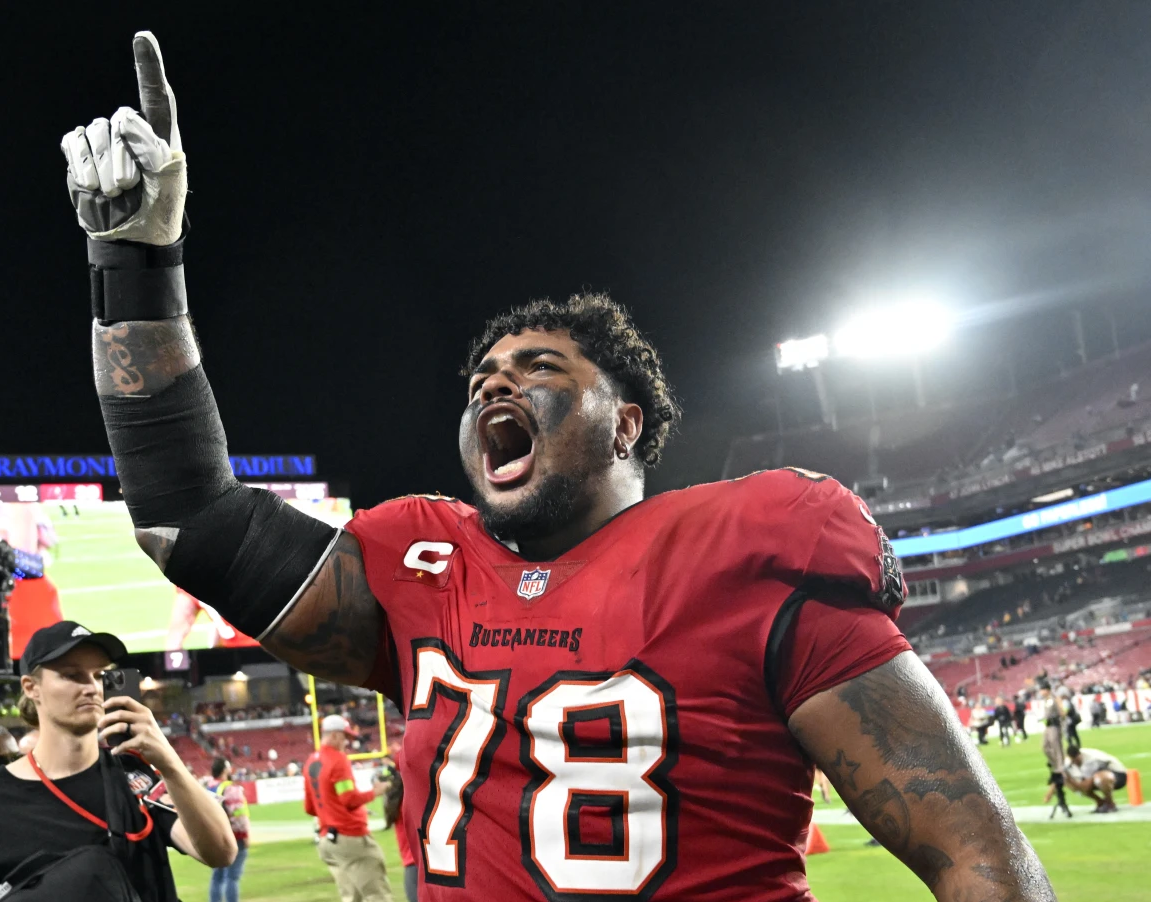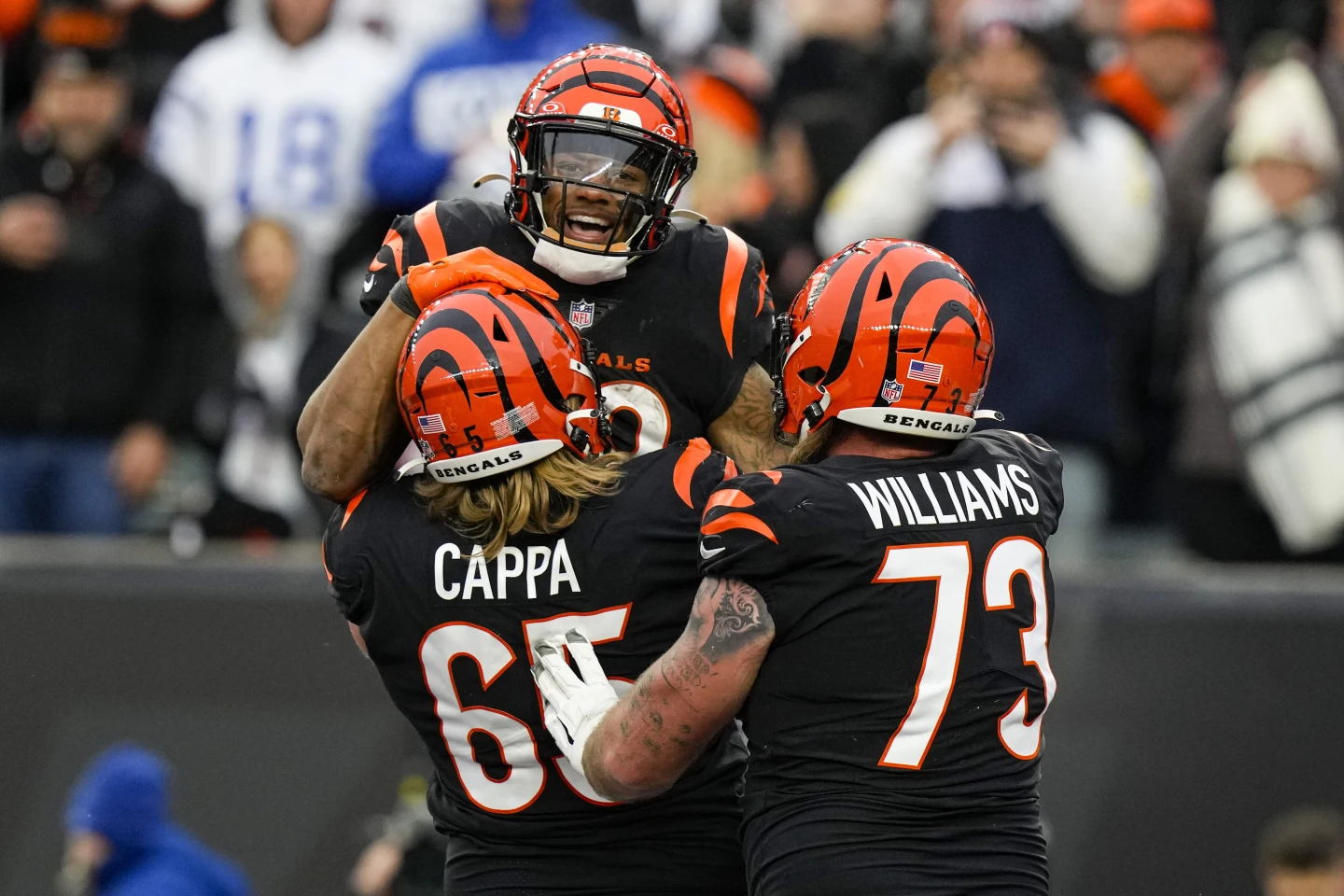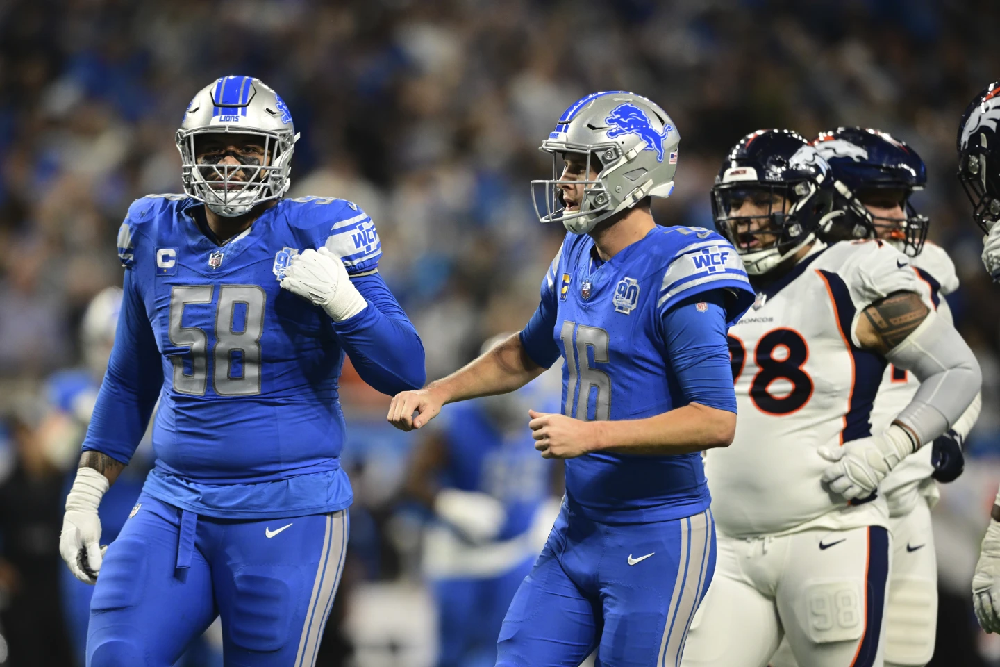Switching from one side of the offensive line to the other is among the NFL’s underrated tough tasks

BY ROB MAADDI
TAMPA, Fla. (AP) — Driving a car with the opposite foot or shaving with the other hand would be major challenges for anyone.
That’s how offensive linemen describe moving from right tackle to left tackle and vice versa. It’s a new position that requires different footwork, hand-and-eye coordination and other techniques all while trying to keep strong and speedy edge rushers from annihilating their quarterback.
Tampa Bay’s Tristan Wirfs and Cincinnati’s Jonah Williams are among the players who’ve made that difficult switch this season. Detroit’s Penei Sewell has gone back and forth.
It’s one of the toughest transitions for an NFL player that’s often overlooked because of the assumption that offensive linemen all do the same thing. Yes, linemen have to block. But each guy on the line has different responsibilities and major adjustments are necessary.
“You have so many reps on one side and it’s muscle memory but then all of sudden you have do everything the other way and it feels weird,” said Wirfs, who was a first-team All-Pro at right tackle in 2021 and made two Pro Bowls at that spot before jumping over to the left side. “The more you do it, the more comfortable you get. But it does suck off the rip. You feel very awkward and it just takes some getting used to. It’s easy to get very frustrated with yourself because you had success on this side. But I’ve got great guys around me.”

Cincinnati Bengals RB Joe Mixon celebrates a TD with Alex Cappa (65) and Jonah Williams (73) during game against the Indianapolis Colts Dec. 10, 2023. (AP Photo/Carolyn Kaster)
Wirfs, a first-round pick by the Buccaneers in 2020, credits offensive line coach Joe Gilbert for helping make his transition smoother.
“He said: ‘I’m not going to let you fail. You’ll be all right,’” Wirfs said. “I’m still getting there. There’s some days where you feel great and some days you’re like, ‘What am I doing?’ But I’m definitely more comfortable than I thought.”
Williams, the 11th overall pick by Cincinnati in 2019, played left tackle at Alabama and throughout his first three years with the Bengals until moving to the right side this season.
“I think in the NFL and especially at o-line, technique is just so important and so ingrained in you and it’s not just knowing the technique, it’s feeling it and your feet and your weight distribution and everything like that so it’s not as easy as just saying now I’m going to do it the other way,” Williams said. “It takes a lot of practice and time.”
Williams was coming off surgery for a dislocated kneecap so he was limited in the offseason but made sure he prepared the best he can.
“Even if I was just going out there and kind of just getting in a stance and holding it for a while each day, that was at least something I could do to start kind of switching my brain over to that side,” Williams said. “And, fortunately, by the time camp rolled around, I was pretty comfortable with it and I’ve just gotten more comfortable with it all year.”
Sewell, the seventh overall pick by Detroit in 2021, was a left tackle at Oregon when he won the Outland Trophy as the nation’s best offensive lineman. He moved to the right side after the Lions drafted him only to make his first career start at left tackle, becoming the youngest player in NFL history at age 20 to start at that position.

Detroit Lions OT Penei Sewell (58) and QB Jared Goff (16) during game against the Denver Broncos, Saturday, Dec. 16, 2023, in Detroit. (AP Photo/David Dermer)
Sewell made the Pro Bowl at right tackle last year and has played there most of this season except for two starts on the left side in Weeks 2 and 3.
“It’s difficult but I think with repetition and the right mind-set, anything’s possible,” Sewell said about the back-and-forth. “When you switch, you have a different leg up front. … So you have to push off a different leg every time. You have to train this leg that’s been back the whole time and catching to now pushing. And then at the same time, you got to be able to have the strength enough to get back to your spot and also stay squared with your hips. Now, when I talk about hips, when you’re on the left side, you kind of open more toward your outside just because you can. You have all that space to use, but then you flip over, you can’t really open your left side because that’s the closest path to the quarterback and now your hips are having to now be trained with your mind.”
Several other offensive linemen have made the switch or been moved around in recent years, including eight-time Pro Bowl pick Tyron Smith of the Cowboys, Miami’s Austin Jackson, Pittsburgh rookie Broderick Jones, Jacksonville’s Walker Little, Tennessee’s Titans’ Dillon Radunz, Jets linemen Mekhi Becton and Carter Warren, Las Vegas’ Jermaine Eluemunor and Thayer Munford.
___
AP Sports Writer Larry Lage in Detroit contributed to this report
___
AP NFL: https://apnews.com/hub/nfl
Read original Associated Press article here.